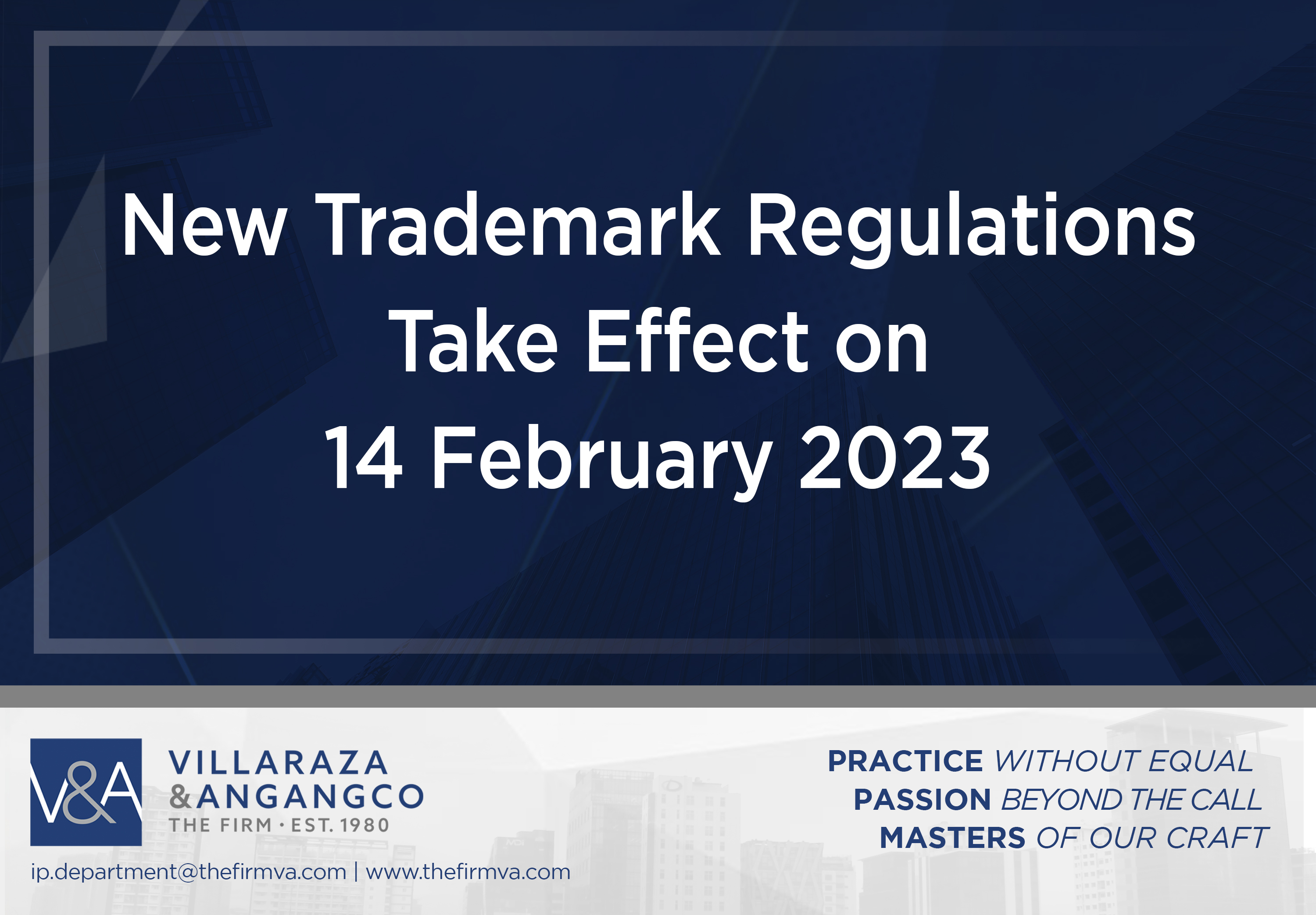
The Intellectual Property Office of the Philippines (IPOPHL) issued on 10 January 2023, IPOPHL Memorandum Circular No. 2023-001 or the Rules and Regulations on Trademarks, Service Marks, Trade Names and Marked or Stamped Containers of 2023 Replacing the Revised Trademark Regulations of 2017, otherwise known as the Trademark Regulations of 2023.
The new Rules, which took effect on 14 February 2023, put into effect the IPOPHL’s standing objective of modernizing and realigning its rules and procedures for trademark registration with the Office’s zero-contact policy and shift towards fully automated business-related transactions.
The new Rules collate the various issuances amending the Trademark Regulations of 2017 since its effectivity and especially throughout the pandemic. Stakeholders should particularly note the following changes to the registration procedure:
-
The main mode of filing is through the IPOPHL’s online system. Other modes of filing may be allowed only under exceptional circumstances as may be ordered by the Director General or Director of Trademarks. Communications are also deemed filed and/or received on the date they are sent online. When payment of fees is required, communications are deemed filed and/or received on the date of payment.
-
For purposes of according a filing date to an application, the filing fee shall now include the Publication for Opposition Fee. The Issuance and Second Publication Fee may also be paid in advance with the filing fee. In case of non-payment or insufficient payment of the filing fee, the applicant has three (3) calendar days to complete the payment to be accorded the original filing date. Thereafter, neither partial payment nor refund of the filing fees is allowed.
-
Prior to the formal and substantive examinations, the applicant has two (2) months from the mailing date of the Examiner’s notice to complete or correct an application. Upon compliance, the application shall be accorded a new filing date which is the date the IPOPHL received the additional requirements. Otherwise, the application will be deemed as not filed.
-
For purposes of determining the deadline to file a response to an office action or comply with an issuance, the “mailing date” is defined as “the date a communication or notice was initially sent through the e-correspondence system or sent to the designated registered e-mail of the applicant/registrant or its agent, as the case may be”. If an office action or issuance has been received both through e-correspondence and e-mail, the reckoning date will be the later date of receipt.
-
During the substantive examination stage, the Examiner may require the applicant to submit sufficient evidence to remove any doubt as to the veracity of any indication or element in the application. Such evidence may be in the form of a sworn statement of ownership and/or affidavit of good faith, among others.
The new Rules also include changes to some of the compliance periods for trademark registration and maintenance, as follows:
-
It an application is filed and/or prosecuted by a representative, the IPOPH may issue an office action requiring the submission of a power of attorney within two (2) months from the mailing date thereof, and non-compliance may result in the abandonment of the application.
-
The period to comply with a Notice of Allowance and Deferment is now one (1) year from the mailing date thereof, as opposed to six (6) months.
-
The request to divide an application may be submitted at ay time prior to its registration instead of prior to the publication of the mark for opposition.
-
A request to revive an abandoned application may be filed within three (3) months from the mailing date of the Notice of Abandonment and not from the date of abandonment.
-
In case of an appeal to the Director of Trademarks, the Appellant’s Brief may be filed within two (2) months, without extension, from the date of filing of the Notice of Appeal, or together with the Notice of Appeal.
-
The Renewal DAU may be filed within the six (6)-month period before the expiration of the registration.
Other notable amendments found in the new Rules are listed below:
-
Collective and Certification marks. An application for a collective or certification mark must be designated as such, and accompanied by a copy of the agreement, if any, governing the use of the collective mark, or the copy of the standards set by the certifier for the use of the certification mark.
-
Three-dimensional, color, motion, or hologram marks. If a trademark application involves a three-dimensional mark, color mark, motion mark, or hologram mark, the application should contain information on the nature of the mark and comply with the reproduction requirements per type listed under the new Rules.
-
Republication in cases of settlement. If the mark is the subject of a settlement and/or compromise agreement, and there was an amendment to the mark, its description, and/or specification, the amended mark may be republished for the public's information.
-
Apostille or authentication requirement. Documentary evidence of transfers of rights over a mark, whether by assignment, merger, succession, license or other means, if executed and notarized abroad, must be authenticated or apostilled, as appropriate.
-
Trademark License Agreement. A trademark license agreement must provide for effective quality control; otherwise, the license contract shall not be valid.
Villaraza and Angangco handles the full gamut of IP-related services including trademark applications and may assist in navigating the new Rules to ensure efficient and successful trademark transactions. For more information on the new Rules and the trademark registration process, you may direct your queries to ip.department@thefirmva.com.

